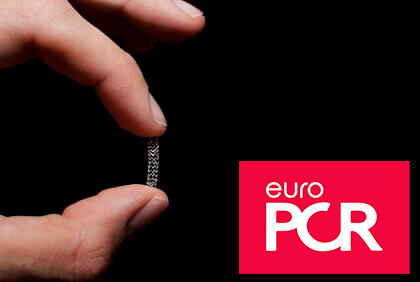The CHOICE trial included 241 patients with severe aortic stenosis and high surgical risk who underwent transcatheter aortic valve replacement (TAVR) using transfemoral access. These patients were randomized to balloon-expandable valve (Edwards Sapien XT) vs. self-expanding valve (Medtronic CoreValve). The endpoints were all-cause mortality, stroke, readmission, valve function parameters as measured through an ultrasound, and durability.

There were no differences between valves at 5 years in all-cause mortality (47.6% vs. 53.4%; p = 0.38), cardiovascular mortality (21.5% vs. 31%; p = 0.12), or stroke (16.5% vs. 17.5%; p = 0.73).
The gradients for both valve types remained low and the effective orifice area was preserved at 5 years. There were no differences in durability either.
The rates for moderate-to-higher paravalvular leak was initially higher with self-expanding valves, but such difference was not present at 5 years.
choice-presentacion-europcrOriginal Title: Five Year Outcomes after TAVI with balloon-expanding volves vs self expanding valves: results from the CHOICE randomised clinicas trial.
Presenter: M. Abdel-Wahab.
Subscribe to our weekly newsletter
Get the latest scientific articles on interventional cardiology
We are interested in your opinion. Please, leave your comments, thoughts, questions, etc., below. They will be most welcome.





